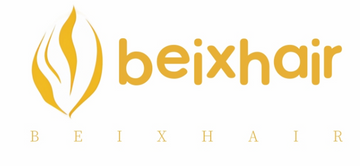When people talk about “Highlight” concerning hair, they mean to create bright colored parts compared with the base hair color. It is created by dyeing or specific techniques. This article will show you its definition, background, and the difference between partial and full highlights.
What is It?
The word “highlight” means the best part or emphasizing something important, or marking text with a bright color in our daily lives. While in the hairdressing industry, "highlight" usually refers to creating light or bright colored parts that contrast with the base hair color. Stylists use this technique to increase the layering and three-dimensionality of the hair.

When Did It Start?
As early as ancient Egypt and Rome, people had already used natural plants or minerals to partially dye hair. But at that time, it was mainly for overall dyeing rather than the current highlight dyeing.
With the popularity of bob hair in the 1920s, people began to try using chemical dyes to make a contrast in their hair colors. However, because of the limited technology, the effect is not good.
In the 1950s, Hollywood stars represented by Marilyn Monroe sparked a trend of local brightening through "bleached blonde hair". Although it is not a precise highlight yet, it has driven people's aesthetic appreciation for contrasting light and dark highlight hairstyles.
In the 1970s, hairdresser Vidal Sassoon and his team promoted the "Foiling" technique, which uses aluminum foil to isolate hair strands for more precise dyeing. This technological innovation has highlighted a mainstream hairdressing service.

In the 2010s, the techniques without the need for foil were prevalent, and people pursued more natural transitions and color explorations.
What Is The Difference Between Partial And Full Highlights?
Firstly, the partial highlight only dyes certain hair areas, other parts will retain the primary color. While the other one means dying the whole hair and making it a more coherent gradient.
Secondly, it takes a different time for the procedure. The former needs 1 to 2 hours while the latter needs 2 to 4 hours, according to the hair length.
Thirdly, the damage to the hair is not the same. The first type is used to treat only partial hair strands (usually accounting for 20% to 40% of the total hair volume). It can avoid overall hair quality damage caused by full-head bleaching and dyeing.
However, the other type needs to dye 50% to 80% of the hair, with many steps involved in bleaching, which will cause serious damage to the hair. Therefore, it is necessary to apply more hair care afterward.

Highlight Methods and Techniques
1. Triangle Highlighting
It can greatly improve the layered texture of a hairstyle through small triangular sections. This method can be applied to medium to long hair. Stylists strategically select the placement and shape of the highlights so that the dyed strands taper to a point when falling. This will emphasize clear layers and defined lines.
Besides, it's important to maintain moderate spacing between the triangular sections to avoid over-highlighting. Otherwise, it could disrupt the overall effect.
2. Slanted Highlighting
It can adapt flexibly to hairstyle needs. Its diagonal sections can enhance the natural flow of long layers. During the dyeing process, stylists need to focus on the design of the crown and golden point areas, such as the direction of fringe fall in layered hairstyles. This will ensure the highlighted sections blend seamlessly into the overall look once completed.
3. Radiating Highlighting
This method works outward from the crown in an arched pattern and creates a stunning dimensional effect. It can showcase the hairstyle's layers and movement. Many hairstyles can try this highlighting method.
The hair's natural growth pattern at the crown is crucial during application. Stylists will employ a tapered sectioning technique (narrower at top, wider at bottom) while carefully controlling the spacing between highlighted sections to achieve perfectly balanced, natural-looking results.

4. Layered Highlights
This technique is ideal for medium-length hairstyles with side or center parts. During the process, stylists must first blow-dry the hair. Then they will select 1 to 1.5 cm wide sections adjacent to the part line and secure them with clips.
There are two secrets for applying this wave-pattern technique: First, they should wrap each section in aluminum foil and ensure the thickness never exceeds 1 cm. Second, to create a subtle peek-a-boo effect, they should maintain approximately 1.5 cm spacing between each layered section.
When the hair moves, the highlighted portions become visible. The overall effect achieves particular softness when lighter shades are used in the lower layers.
Recommendation
Now that you have learned the difference between partial and full highlights. If you pursue nature and low damage, the first type is good for you. If you pursue a vivid effect, the second type will be better! Additionally, four methods are listed for your reference. If it is still hard to make a decision, BEIXHAIR can liberate you from the entanglement with all kinds of highlight wigs solutions.

